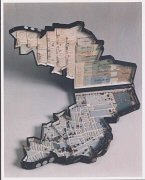| |
DEPORTATIONS TO THE LODZ GHETTO
In 1941 and 1942, almost 40,000 Jews were deported to the Lodz ghetto: 20,000 from Germany, Austria, the Protectorate of Bohemia and Moravia, and Luxembourg, and almost 20,000 from the smaller provincial towns in the Warthegau. About 5,000 Roma (Gypsies) from Austria, primarily from the Burgenland province, were deported to the ghetto. They were confined in a segregated block of buildings.
DEPORTATIONS FROM THE LODZ GHETTO
In January 1942, German authorities began to deport Jews from Lodz to Chelmno extermination camp. By September 1942, they had deported over 70,000 Jews and about 5,000 Roma to Chelmno. At Chelmno, a special SS detachment killed the Jewish deportees in mobile gas vans (trucks with a hermetically sealed compartment that served as a gas chamber). Jews were concentrated at assembly points in the ghetto before deportation. The Germans at first required the Jewish council to prepare lists of deportees. As this method failed to fill required quotas, the Germans resorted to police roundups. German personnel shot and killed hundreds of Jews, including children, the elderly, and the sick, during the deportation operations.
Between September 1942 and May 1944, there were no major deportations from Lodz. The ghetto resembled a forced-labor camp. In the spring of 1944, the Nazis decided to destroy the Lodz ghetto. By then, Lodz was the last remaining ghetto in Poland, with a population of approximately 75,000 Jews in May 1944. In June and July 1944 the Germans resumed deportations from Lodz, and about 3,000 Jews were deported to Chelmno. The ghetto residents were told that they were being transferred to work camps in Germany. The Germans deported the surviving ghetto residents to the Auschwitz-Birkenau extermination camp in August 1944.
|
|


